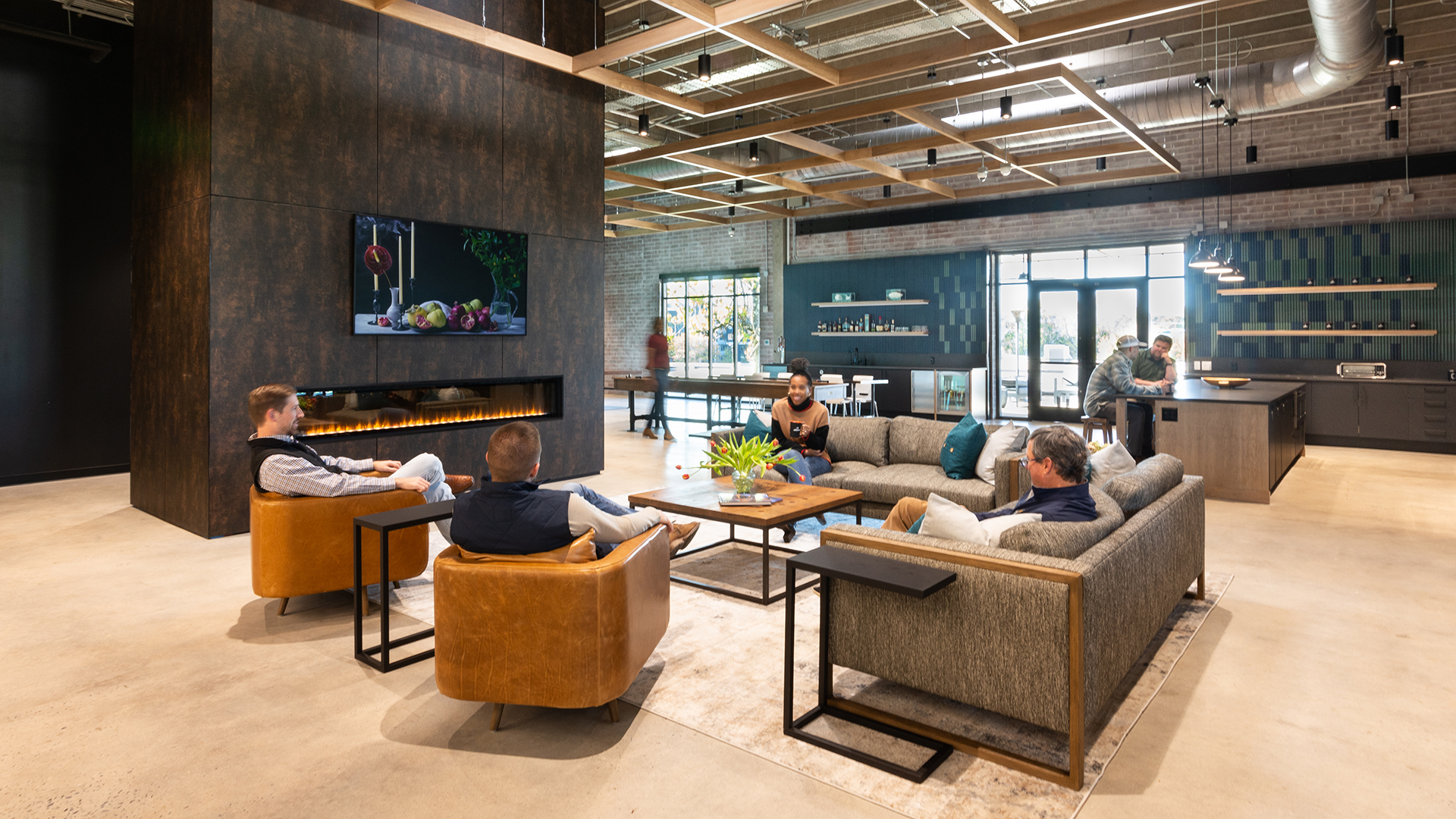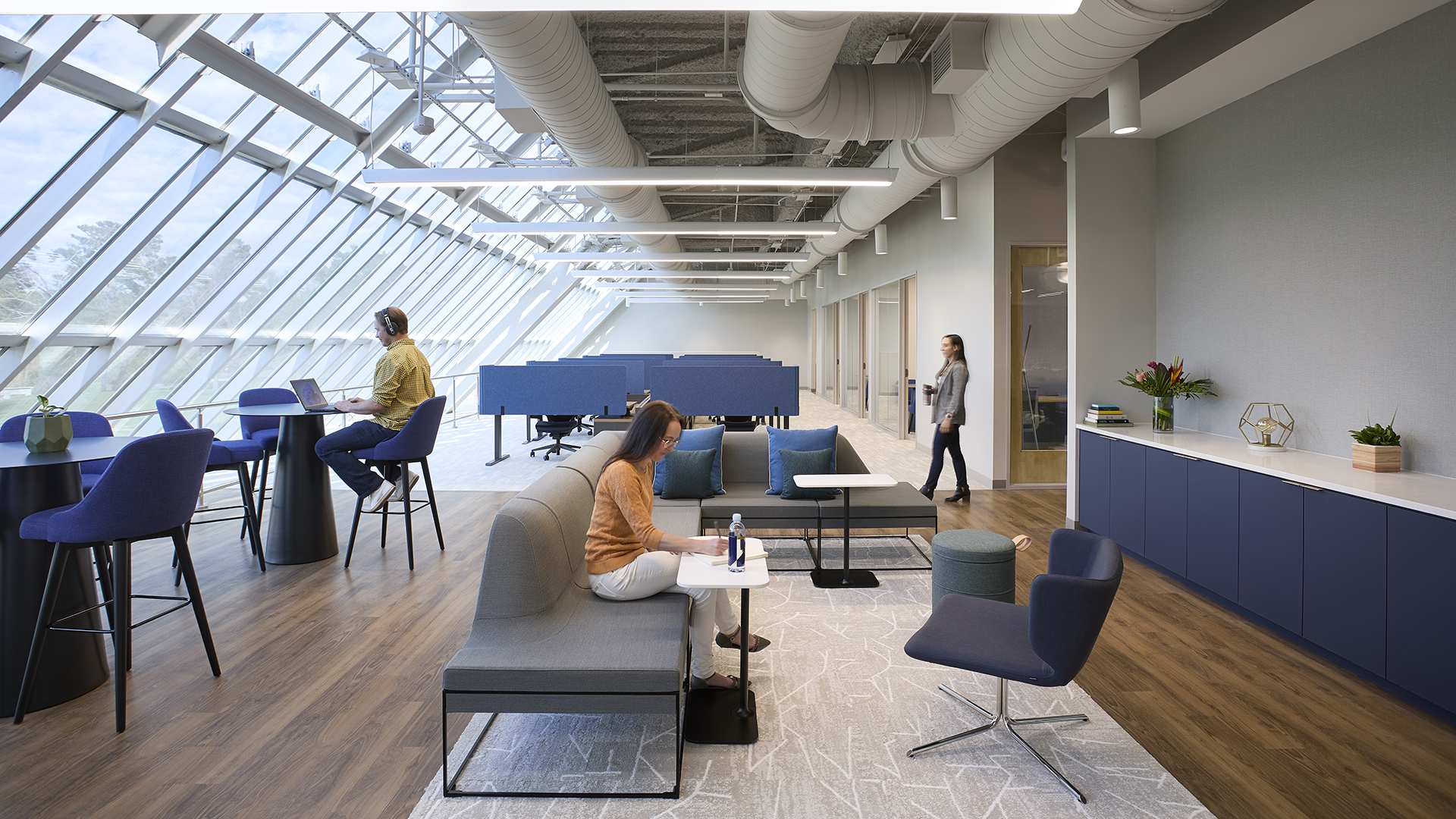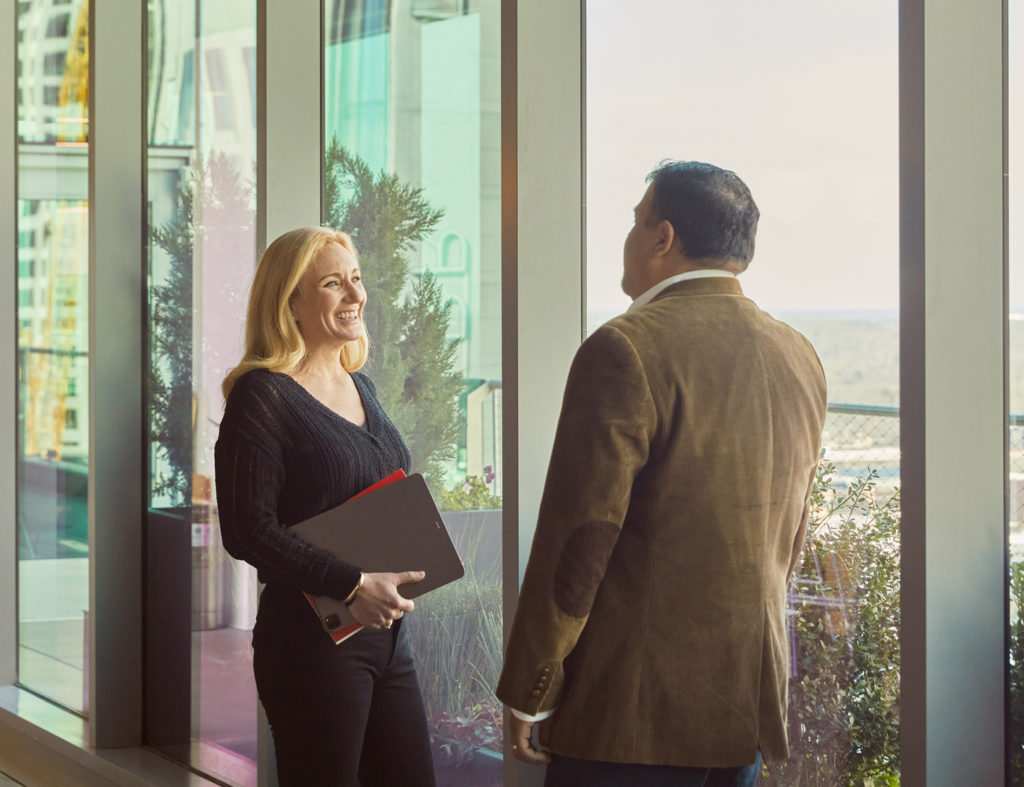The modern workplace is evolving faster than ever, driven by shifts in employee values, business needs, and architectural innovation. Designers are at the forefront of this transformation, shaping spaces that go beyond functionality to inspire creativity, support wellness, and foster community.
From hospitality-inspired welcome hubs to move-in-ready speculative suites, the trends of 2025 redefine what it means to work—and thrive—in a professional environment. Below, we’ve compiled the top eight workplace design trends that are shaping the future, as told by leading architects and designers at Little.
Workplace Trend 1: Welcome Hubs
Gone are the days of cold, impersonal lobbies. Instead, workplaces are embracing cozy, welcoming spaces that blur the line between office and café culture, reflecting a shift toward more personable and engaging first impressions.
“Immersive, hospitality-inspired welcome hubs are oh so popular! Replacing traditional corporate receptions, these spaces are designed to feel like high-end coffee shops, creating a warm and inviting experience for both visitors and employees.”
— Jennilyn Schuster, Associate, Little Charlotte
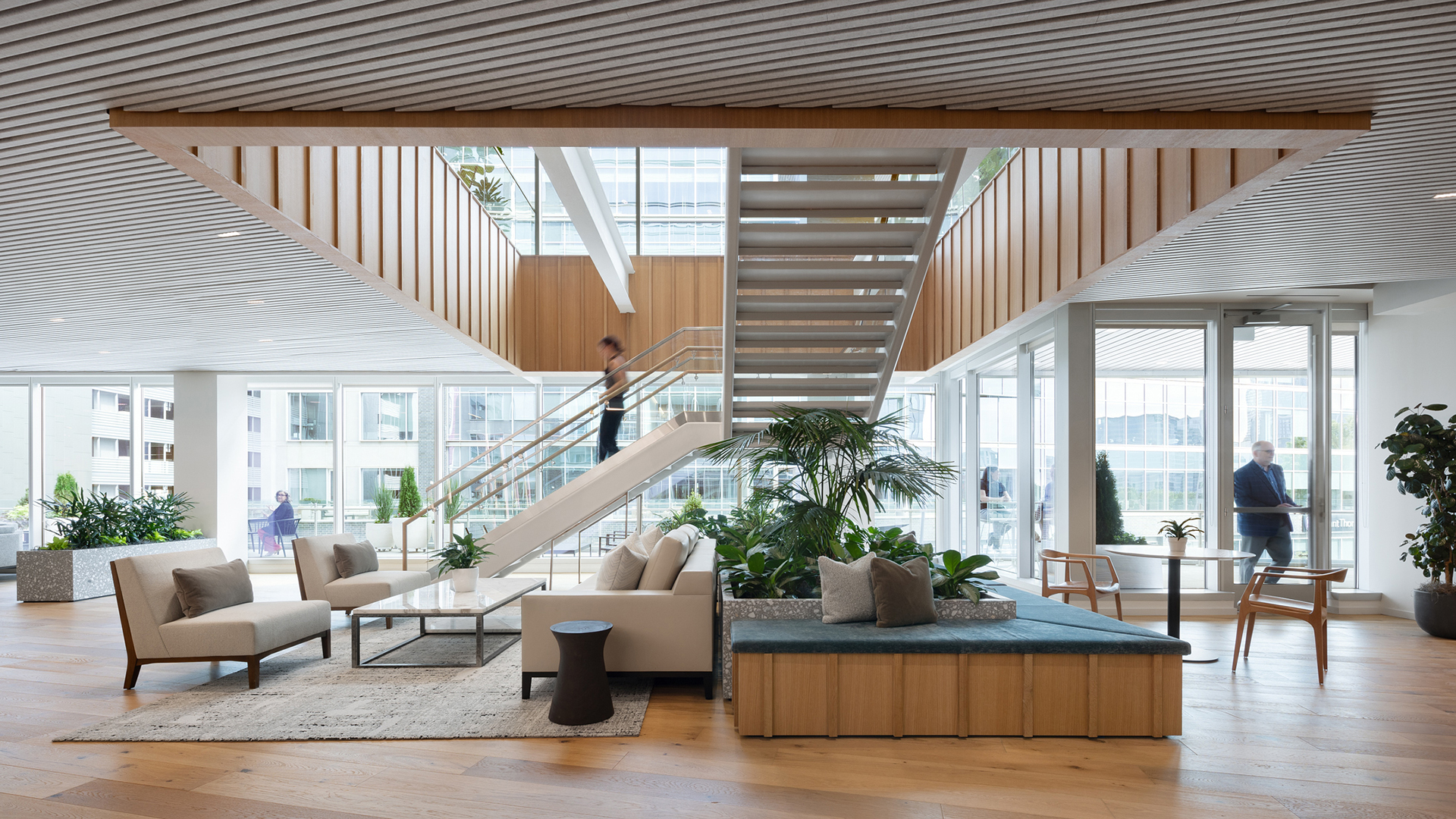
Workplace Trend 2: Promote a Work/Life Balance
A healthier work-life balance isn’t just a trend—it’s a workforce demand. From wellness rooms to quiet zones for focused work, designers are creating environments that prioritize employee well-being. Hybrid workweeks are here to stay, and the office must now serve as a destination for productivity and rejuvenation.
“Between the pandemic and a new generation entering the workforce that values a more balanced work-life dynamic, companies need to reevaluate the types of work environments and benefits they offer their employees. In the office, we are likely to see more spaces dedicated to personal wellness, along with quiet areas for focused work. Additionally, the trend of hybrid workweeks will continue, allowing employees to work from home part of the time.”
— Natasha Edwards, Studio Principal, Little Charlotte
Workplace Trend 3: Move-In-Ready Interior Suites Designed for Speculative Tenants
Landlords and designers are working together to create pre-finished spaces that are ready for tenants to move in and start working. This approach accelerates leasing and provides tenants with a polished, functional environment tailored to modern workplace demands.
“We’re increasingly partnering with landlords to create efficient spaces based on proven workplace design principles, even before they’ve secured a tenant. This approach helps landlords lease spaces faster by offering tenants a quick, market-ready solution.”
— Sharon Crawford, Partner and Studio Principal, Little Durham
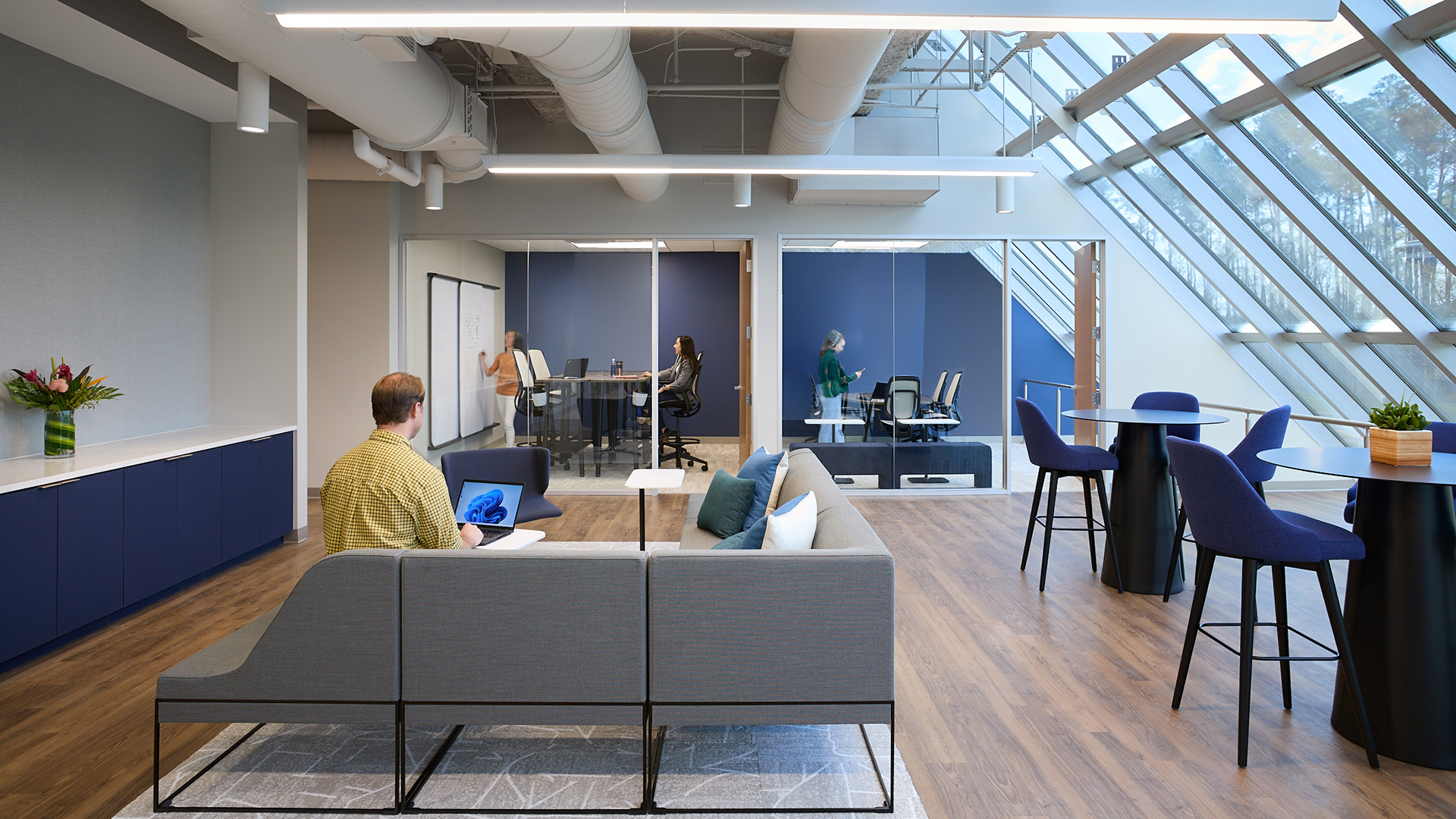
Workplace Trend 4: Blend Physical and Cultural Substance
The best workplaces don’t just look good—they mean something. Designers are creating spaces that combine durable, high-quality materials with areas for cultural connection and personal expression. These environments reflect an organization’s identity while inspiring employees to innovate and excel.
“Emerging workplace trends emphasize that a workplace and its architecture must embody both physical and cultural substance, combining materials of quality and permanence with spaces that foster cultural significance, personal expression, and growth. These environments not only support the business they house but also inspire those within to thrive and innovate, reflecting the evolving priorities of modern organizations.”
— Nick Ault, Partner and Studio Principal, Little Charlotte
Workplace Trend 5: Hints of Home and Hospitality
Offices are taking cues from home design, with cozy furniture, natural light, and even elevated food and beverage options. The goal? To create spaces that feel welcoming and personal while supporting professional goals. These thoughtful touches help attract and retain top talent in a competitive market.
“While not a new trend, we continue to see workplaces increasingly incorporating hospitality and home-inspired elements to enhance employee well-being, foster collaboration, and attract talent. This trend emphasizes a balance of professionalism with hospitality and comfort through features such as comfortable furniture, light quality and varied lighting levels, finely detailed aesthetics, wellness-focused spaces, flexible work environments, and higher-end food and beverage offerings. While we are seeing consolidation of spaces in certain markets, we continue to see clients request high touch, high impact design solutions.”
— Ashley Hall, Partner and Studio Principal, Little Charlotte
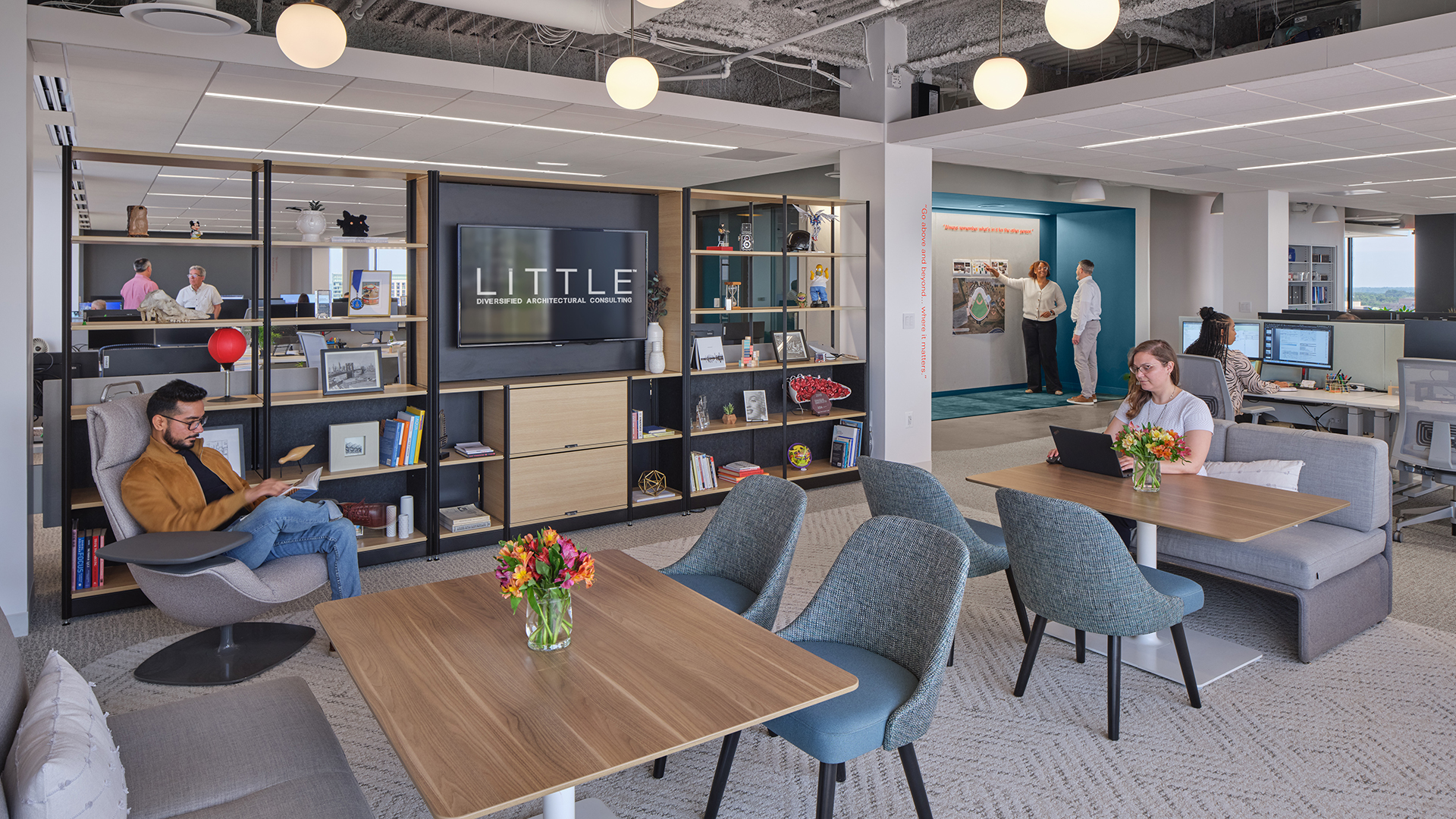
Workplace Trend 6: Prioritizing Adaptable Spaces
Flexibility is the name of the game. With hybrid work models in flux, offices are embracing features like movable walls, multi-purpose rooms, and shared building amenities. These designs help businesses adapt quickly to changing needs while saving money and reducing unused space.
“In 2025, adaptable office design takes center stage—from flexible walls to shorter leases—to meet evolving business needs. Shared building amenities reduce the need for large office spaces, helping businesses save money and only use what they need. This setup supports future growth and gives companies the flexibility to adjust as hybrid work models change over time.”
— Courtney Murphy, Studio Principal, Little DC
Workplace Trend 7: Sustainable Growth Through Community and Stewardship
Sustainability is no longer a bonus—it’s a necessity. Designers are finding creative ways to reduce environmental impact while also fostering a sense of community. From repurposing vacant spaces to creating ecosystems that go beyond office walls, sustainability is becoming integral to workplace design.
“How we build and expand matters. With high office vacancy rates, rent increases, and challenging loan securements, responsible stewardship that preserves our natural resources will be paramount. Active community engagement and collaboration will ensure these spaces meet diverse needs, fostering belonging and shared responsibility. Well-connected ecosystems that support more than just workplaces will be key to building long-standing communities.”
— Rebecca Sistruck, Senior Associate, Little Charlotte
Workplace Trend 8: Greater Collaboration
Collaboration is at the heart of the workplace, and design is catching up. Expect to see more informal meeting areas with soft seating, warm lighting, biophilic elements, and acoustic treatments that encourage teamwork while maintaining focus.
“Traditional isolated workstations are giving way to smaller, versatile touchdown spaces designed for team interaction. These inviting settings feature informal soft seating, warm lighting, biophilic accents, varied textures like wood finishes, and acoustic treatments for comfort and functionality.”
— Lisa Luttrell, Studio Principal, Little Newport Beach
